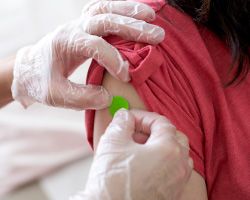Health library
Back to health libraryHow to protect against polio in the U.S.

Oct. 3, 2022—Polio was once a dreaded disease in the United States. It disabled thousands of children each year. Thanks to vaccines, poliovirus was eliminated in the U.S. Now, for the first time in nearly 10 years, a case of polio has been confirmed in a U.S. community.
According to the Centers for Disease Control and Prevention (CDC), the infected person (who became paralyzed) was an unvaccinated adult in Rockland County, New York. That person hadn't recently traveled to a polio-affected country. Officials also found poliovirus in the sewage system nearby. This shows that the virus has been circulating in the surrounding areas, according to CDC.
Based on genetic testing, the poliovirus found in New York is vaccine-derived poliovirus (VDPV). VDPV differs from the "wild" form that was eliminated in the U.S. The VDPV strain is related to the weakened live poliovirus in the oral polio vaccine. That type of vaccine hasn't been used in the U.S. since 2000, but it is still used in other countries. The weakened virus in the oral polio vaccine can regain its ability to cause illness if it spreads in communities with low vaccination rates. The U.S. is now one of about 30 countries where circulating VDPV has been identified.
CDC emphasized that these infections are not caused by a child receiving the polio vaccine and that the news doesn't change the current recommendations for polio vaccination. The polio vaccines used in the U.S. are safe and effective. They cannot cause VDPV.
CDC's polio vaccine recommendations
- Children need four doses of polio vaccine. They should get their shots at ages 2 months, 4 months, 6 to 18 months, and 4 to 6 years.
- Most adults in the U.S. had the polio vaccine when they were kids. But if you (or your kids) have not been fully vaccinated, you should do it now. Your doctor can tell you how many doses you may need.
- You should get a polio booster before you travel to countries where polio is circulating.
About polio
Polio is highly contagious. It spreads through contact with the stool of an infected person, through contaminated food or water, or through the sneezes or coughs of an infected person.
Because it infects the nervous system, polio can cause paralysis. However, most people who get polio have no visible symptoms, according to CDC. About 25% of people infected with polio have flu-like symptoms, such as a fever, headache, fatigue, sore throat, and nausea or vomiting. Other signs and symptoms may include a stiff neck and limb pain.
There is no cure for polio, which is why vaccination is so important.
Have your kids had all their shots?
Vaccines help protect against polio—and many other diseases, like COVID-19, measles and more. Find out which vaccines are needed and when.
